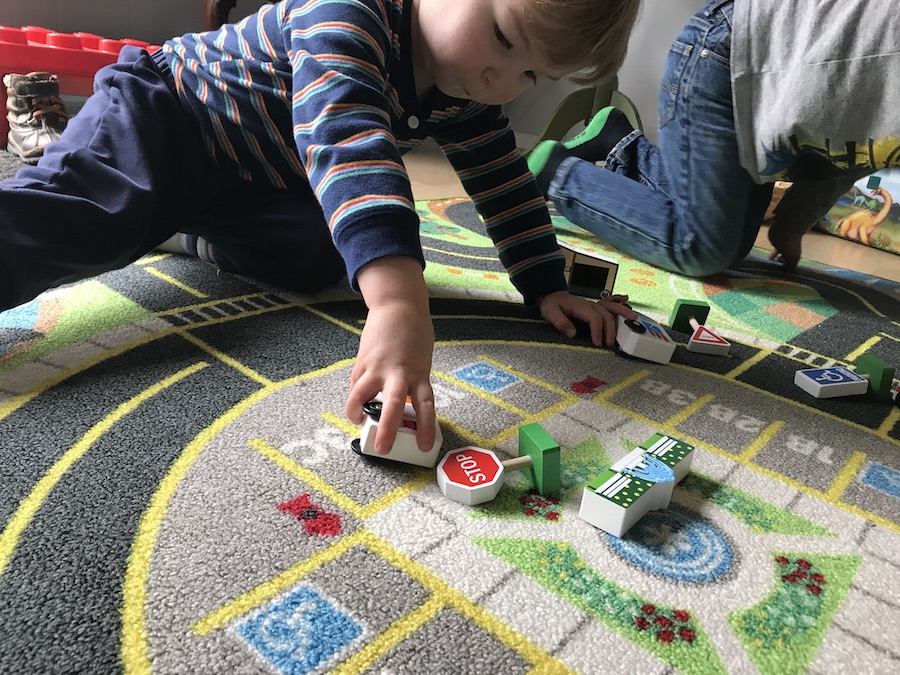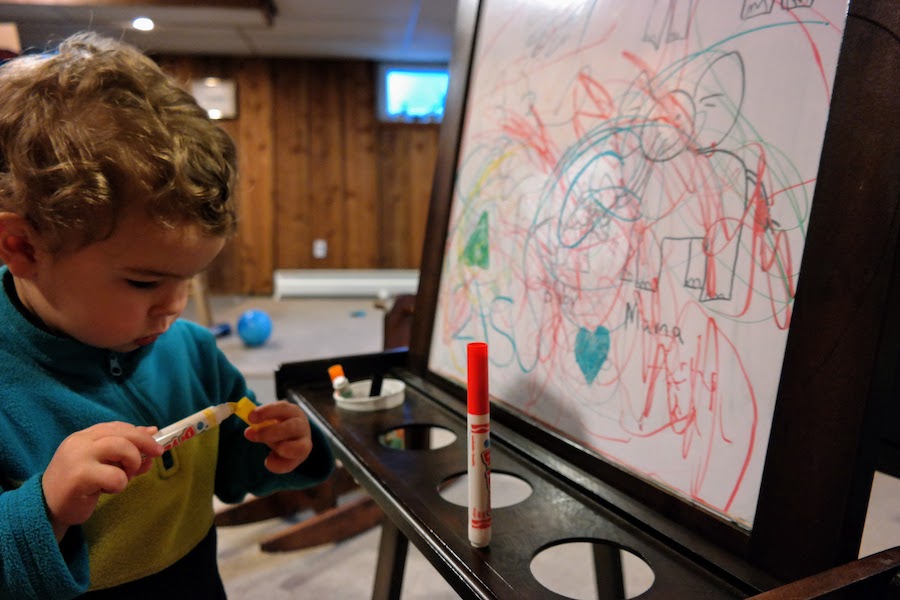Last Updated on July 1, 2022 by admin
I kind of balk at the idea of playrooms, even though I have on in my own house. On one hand, keeping toys in one dedicated room is one of the best ways to keep them from invading every square foot of your home’s space, as I wrote in my guide to toddler toy organization. But on the other hand, parents have enough to worry about without feeling pressure to transform an entire room into an Insta-perfect haven for their kids.
The thing is, you don’t need a playroom or even any extra kid-specific furniture to have designated play spaces for your toddler’s favorite activities. Dedicating specific spaces for various types of play makes that play more fun and more accessible for kids. It also makes their activities easier to organize and clean up.
As an Amazon affiliate, I earn from qualifying purchases.
1. A place for sensory play (water/sand)
Toddlers love water play and discovering the sensation of squishy materials like mud, sand, and dough. Giving them access to play with these materials can be great for both of you. (They have fun, you get a break for a few minutes.)
What it needs:
- An accessible bin, bowl, or table with edges to contain the “stuff”
- A floor that’s easy to sweep/dry off (or that you don’t need to be clean)
What it could look like:
- A small step stool in the bathroom that gives kiddo access to the sink
- A “kitchen helper” tower to give kiddo access to the kitchen sink or counter
- A large plastic storage bin with sensory supplies that you can put on the floor or on the kitchen table when it’s playtime
- A dedicated sensory table with compatible storage bins
- A water table for outside (ideal for places with mostly temperate climates)
- A mud patch / dirt patch in the yard

2. A place for large motor play
Newsflash: Toddlers need to run, climb, roll, and spin. We all know it, so making sure they can do so whenever they like is a real treat for everyone.
What it needs:
- Space where tots can run and spin without getting hurt, damaging property, or annoying the heck out of you
- Space where they can throw themselves down on the ground and roll with relative ease
What it could look like:
- A backyard / front yard, maybe with a grassy slope
- An empty basement with a crash pad
- A carpeted room cleared of floor-toys and devoid of breakable lamps/art
- A couch they can fall down on / throw themselves off of
3. A place for miniature toys/vehicles/puzzles/fine motor play
Whether your toddler loves a wooden train set, a vehicle set, a miniature set, or any other toy with a variety of small parts, kids and parents will both benefit from keeping these mess-making toys in a dedicated space that’s ideally away from where everyone is already walking or prepping dinner.
What it needs:
- A surface where kids can easily keep track of their pieces
What it could look like:
- A child-sized “train table” or an activity table with a slight edge to keep pieces contained (see featured image)
- An area of the floor outside of where everyone needs to walk

4. A place for art work
What it needs:
- A flat surface that’s easy to wipe clean and easy for toddlers to access as they either sit or stand comfortably
- Nearby accessible art supply storage (ideally)
What it could look like:
- A floor easel
- A table easel
- A child-sized flat table
- A booster seat at the kitchen table (the same one they use for eating

5. A place for safe outdoor play
As we mentioned in our complete list of developmental toys for 2-year-olds, some kids are naturally drawn to the outdoors and really need outside time to thrive. But outside time has benefits for everyone beyond fostering an appreciation for the plants and animals we share this ecosystem with. Fresh air and sunlight just make you feel better, but can also lead to better exercise, better sleep, and better air quality. (??)
What it needs:
- Need to be outside
What it could look like:
- A water table or sensory table on a balcony
- Just a yard
Bonus Space: A Reading Nook
This is a bonus space because technically it isn’t a play space, but reading books with your 2-year-old is much easier when you have a dedicated different arrangement for the activity. For example, I’ve noticed that when I try to read with my kids in the space on the couch where they usually watch TV, they get really fidgety. The rocking chair that I used for bedtime stories with my oldest got too small quickly once he started getting bigger (and it got way too small when he got a little brother).
What it needs:
- space for a grown up and a kid or two to sit comfortably
- snuggly materials
- good lighting
- nearby book storage (optional)
What it could look like:
- A bean bag chair next to a bright window and a wall-mounted bookshelf
- A whimsical play tent with strands of lights inside and a floor pillow on the bottom (in the same room as a bookshelf)
- A wedge-shaped pillow that makes it more comfortable to read sitting in bed next to a bedside lamp



